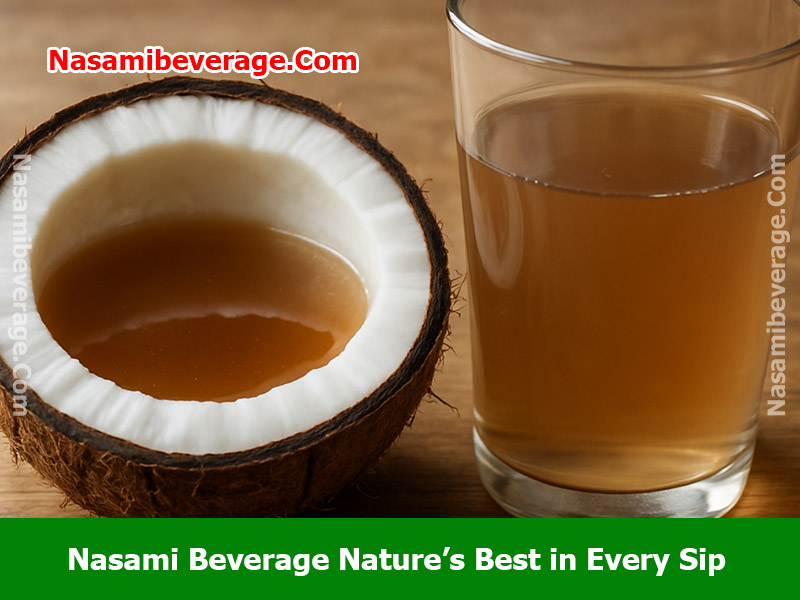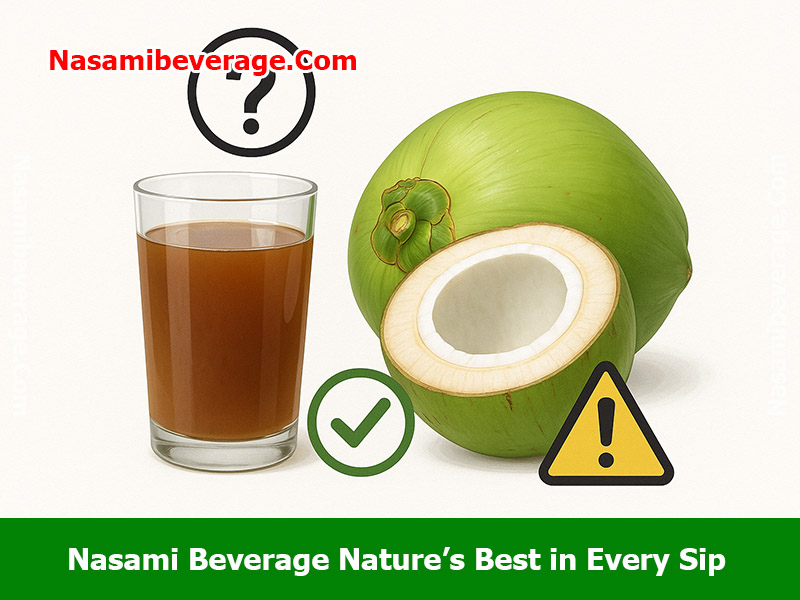Is brown coconut water safe to drink? Ever cracked open a coconut only to find brown coconut water inside? You might wonder if it’s safe to drink or a sign of spoilage. This article explores whether brown coconut water is safe to consume, addressing questions like is it safe to drink brown coconut water, can you drink brown coconut water, and brown coconut water drinkable, why it changes color, and how to spot unsafe coconut water. It will also clarify if are brown coconuts safe to drink and can you drink brown coconut water. Discover the health benefits, debunk common myths, and learn tips for choosing the best coconut water, whether fresh or packaged. With insights into trusted brands and practical advice, you’ll feel confident about enjoying this natural hydration source.
What is brown coconut water?
Understanding coconut water
Coconut water is the clear liquid found inside young green coconuts, prized for its hydrating properties and natural electrolytes like potassium and sodium. As coconuts mature, the water can take on a slightly different hue or flavor due to natural processes, leading to common questions about brown coconut water vs green coconut water or whether you can drink mature coconut water. It’s a popular choice for fitness enthusiasts and health-conscious individuals seeking a low-calorie, nutrient-rich beverage. Whether sipped straight from the coconut or poured from a bottle, this drink offers a refreshing way to stay hydrated.
Why does coconut water turn brown?
The brown color in coconut water often stems from oxidation, a natural reaction when the liquid is exposed to air, explaining why is my coconut water brown. Enzymatic processes within the coconut can also cause discoloration, especially in mature coconuts, resulting in coconut water brown or coconut water is brown. This change is similar to an apple browning after being cut and doesn’t always indicate spoilage. Fresh coconut water may turn brown shortly after opening, but it typically retains its nutritional value and safety if stored properly. Curious about what colour is coconut water? The coconut water brown color is a natural variation, common and often harmless.
Is brown coconut water safe to drink?
When it’s safe
Brown coconut water from a freshly cracked coconut is generally safe to consume if it smells fresh and has no off-putting taste. This means, yes, can you drink brown coconut water and the water from brown coconut. The slight discoloration often occurs naturally and doesn’t affect the drink’s quality, making brown coconut water drinkable. For example, water from brown coconut’ may have a brownish tint but still offer the same hydration benefits, confirming ‘is brown coconut water good’ if fresh. So, ‘can you drink brown coconut’ water if it’s otherwise fine, and ‘can you drink the water from a brown coconut’ after a quick check. Always check for freshness by ensuring the coconut has no cracks or mold before drinking.
Signs of spoilage to watch for
To ensure safety, inspect coconut water for spoilage indicators. If you encounter these signs, this is ‘why you can’t drink brown coconut water.’ A sour or fermented smell, fizzing texture, or cloudy appearance suggests the liquid has gone bad. Mold or unusual particles inside the coconut are also red flags. If the taste is off or unpleasant, discard the coconut water immediately. Knowing how to know if coconut water is bad can save you from consuming spoiled liquid and ensure a pleasant experience.

Fresh vs. packaged coconut water
Fresh coconut water offers an authentic experience but requires careful inspection for freshness, especially when wondering ‘can you drink mature coconut water’ that may have a brownish hue. Packaged options, like those from Vita Coco or Harmless Harvest, undergo pasteurization to extend shelf life and ensure safety. These brands maintain consistent quality, making them a reliable choice for consumers. While fresh coconut water has a shorter shelf life, trusted packaged brands provide convenience without compromising nutrition.
Health benefits of coconut water
Nutritional Profile
Coconut water is a powerhouse of hydration, packed with electrolytes like potassium, sodium, and magnesium. These are among the key ‘brown coconut water benefits,’ confirming ‘is brown coconut water good’ for you. With low calories and no added sugars in its natural form, it’s an excellent choice for post-workout recovery or daily hydration. Its nutrient profile supports muscle function, heart health, and overall wellness, making it a favorite among athletes and health enthusiasts. Wondering how many calories in coconut water? It’s a low-calorie option perfect for clean eating.
Does browning affect benefits?
Natural browning in coconut water doesn’t diminish its health benefits. The electrolytes and nutrients remain intact, even if the color shifts slightly, contributing to the consistent ‘brown coconut water benefits.’ For instance, a brownish tint from oxidation won’t reduce potassium levels or hydration potential, and importantly, ‘does brown coconut water dehydrate you’? No, it still provides excellent hydration. Choosing reputable brands like C2O ensures you get the full nutritional value, regardless of slight color variations in fresh or minimally processed coconut water.
How to choose safe coconut water
Tips for fresh coconuts
Selecting a fresh coconut is key to enjoying safe coconut water. This is especially true when considering ‘can you drink water from brown coconut’ or ‘can you drink brown coconut’ at all. Look for coconuts that feel heavy for their size, with no cracks or soft spots. Shake the coconut to hear liquid sloshing inside, indicating freshness. Once opened, store coconut water in the refrigerator and consume it within 24 hours to maintain quality. These steps ensure you enjoy fresh, safe coconut water every time.

Choosing packaged coconut water
For convenience, opt for packaged coconut water from trusted brands like Taste Nirvana or Vita Coco. Check labels for organic, non-GMO certifications and minimal additives to ensure purity. Pasteurization in these products enhances safety, making them ideal for on-the-go hydration. Look for transparent sourcing details, as brands like Harmless Harvest prioritize raw, organic coconut water for maximum quality.
Common myths about brown coconut water
Myth: brown means spoiled
A common misconception is that brown coconut water is always spoiled, leading people to wonder, ‘is coconut water supposed to be brown’ or ‘why can’t you drink brown coconut water.’ In reality, natural oxidation or maturity can cause the color change without affecting safety. As long as the coconut water passes smell and taste tests, it’s typically safe to drink. This myth often leads people to discard perfectly good coconut water, missing out on its benefits.

Myth: only clear coconut water is healthy
Another myth suggests that only clear coconut water offers health benefits. Color doesn’t determine nutritional quality, as ‘brown coconut water’ retains its electrolytes and hydration properties, highlighting its ‘brown coconut water benefits.’ This confirms ‘is brown coconut water good’ for consumption despite its hue. Whether clear or slightly brown, coconut water from brands like Zico or fresh coconuts delivers the same wellness advantages, debunking the idea that clarity equals quality.
FAQs – Is brown coconut water safe to drink?
Why does coconut water turn brown?
Coconut water turns brown due to oxidation or enzymatic reactions when exposed to air or as the coconut matures. This explains ‘why is my coconut water brown’ or why you see ‘coconut water brown’ or ‘coconut water is brown.’ The ‘coconut water brown color’ is a natural process and doesn’t always mean it’s unsafe.
Can I drink brown coconut water from a fresh coconut?
Yes, ‘can you drink brown coconut water’ from a fresh coconut, and ‘is it safe to drink brown coconut water’ in such cases? It is usually safe if it smells fresh and tastes normal. This also applies to ‘can you drink mature coconut water’ or ‘can you drink brown coconut’ as long as you check for spoilage signs like sourness or mold first. So, the ‘water from brown coconut’ is often fine.
How can I tell if coconut water has gone bad?
Spoiled coconut water has a sour smell, fizzy texture, cloudiness, or mold. If it tastes off or shows these signs, discard it immediately.
Are packaged coconut water brands safer than fresh?
Packaged coconut water, like Vita Coco or Harmless Harvest, is pasteurized for safety and has a longer shelf life. Fresh coconut water is safe but requires careful inspection, especially when distinguishing between ‘brown coconut water vs green coconut water’ in its natural state.
Brown coconut water is often safe to drink, confirming ‘brown coconut water drinkable,’ with its color typically resulting from natural oxidation or coconut maturity. By checking for spoilage signs like sour smells or fizzing, you can confidently enjoy this hydrating beverage. Its ‘brown coconut water benefits,’ including electrolytes and low calories, remain intact regardless of slight browning, proving ‘is brown coconut water good’.
Whether you choose fresh coconuts or trusted brands like Nasami Beverage, Vita Coco, or Harmless Harvest, coconut water, even if it appears as ‘brown coconut juice,’ is a refreshing, nutrient-rich option. As Dr. Josh Axe notes, Coconut water is nature’s perfect hydration drink, packed with electrolytes to refresh and restore. Explore Nasami Beverage’s range of coconut water products to elevate your wellness routine today.